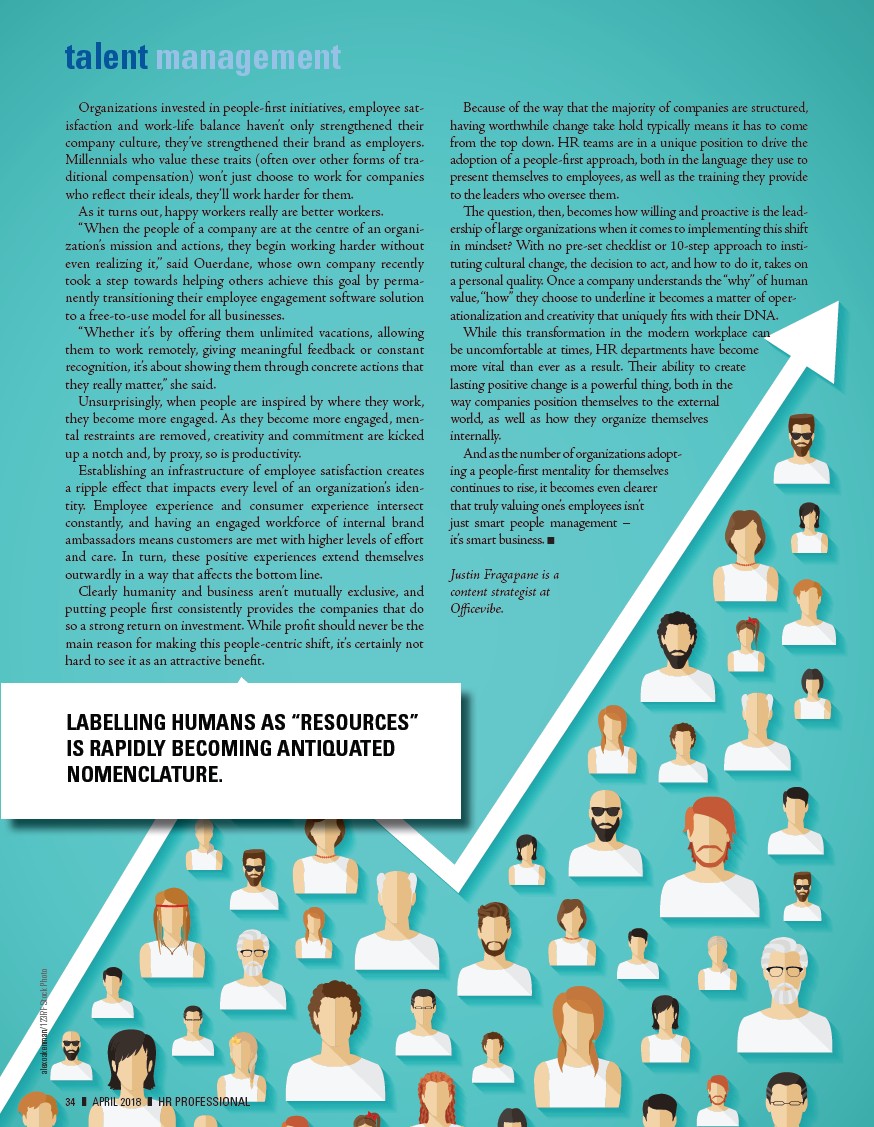
Organizations invested in people-first initiatives, employee satisfaction
and work-life balance haven’t only strengthened their
company culture, they’ve strengthened their brand as employers.
Millennials who value these traits (often over other forms of traditional
compensation) won’t just choose to work for companies
who reflect their ideals, they’ll work harder for them.
As it turns out, happy workers really are better workers.
“When the people of a company are at the centre of an organization’s
mission and actions, they begin working harder without
even realizing it,” said Ouerdane, whose own company recently
took a step towards helping others achieve this goal by permanently
transitioning their employee engagement software solution
to a free-to-use model for all businesses.
“Whether it’s by offering them unlimited vacations, allowing
them to work remotely, giving meaningful feedback or constant
recognition, it’s about showing them through concrete actions that
they really matter,” she said.
Unsurprisingly, when people are inspired by where they work,
they become more engaged. As they become more engaged, mental
restraints are removed, creativity and commitment are kicked
up a notch and, by proxy, so is productivity.
Establishing an infrastructure of employee satisfaction creates
a ripple effect that impacts every level of an organization’s identity.
Employee experience and consumer experience intersect
constantly, and having an engaged workforce of internal brand
ambassadors means customers are met with higher levels of effort
and care. In turn, these positive experiences extend themselves
outwardly in a way that affects the bottom line.
Clearly humanity and business aren’t mutually exclusive, and
putting people first consistently provides the companies that do
so a strong return on investment. While profit should never be the
main reason for making this people-centric shift, it’s certainly not
hard to see it as an attractive benefit.
Because of the way that the majority of companies are structured,
having worthwhile change take hold typically means it has to come
from the top down. HR teams are in a unique position to drive the
adoption of a people-first approach, both in the language they use to
present themselves to employees, as well as the training they provide
to the leaders who oversee them.
The question, then, becomes how willing and proactive is the leadership
of large organizations when it comes to implementing this shift
in mindset? With no pre-set checklist or 10-step approach to instituting
cultural change, the decision to act, and how to do it, takes on
a personal quality. Once a company understands the “why” of human
value, “how” they choose to underline it becomes a matter of operationalization
and creativity that uniquely fits with their DNA.
While this transformation in the modern workplace can
be uncomfortable at times, HR departments have become
more vital than ever as a result. Their ability to create
lasting positive change is a powerful thing, both in the
way companies position themselves to the external
world, as well as how they organize themselves
internally.
And as the number of organizations adopting
a people-first mentality for themselves
continues to rise, it becomes even clearer
that truly valuing one’s employees isn’t
just smart people management –
it’s smart business. n
Justin Fragapane is a
content strategist at
Officevibe.
talent management
LABELLING HUMANS AS “RESOURCES”
IS RAPIDLY BECOMING ANTIQUATED
NOMENCLATURE.
alexoakenman/123RF Stock Photo
34 ❚ APRIL 2018 ❚ HR PROFESSIONAL